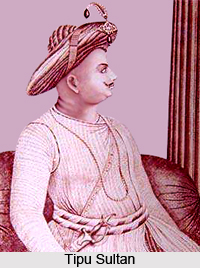 History of Dindigul district in Tamil Nadu reveals that it was formed on fifteenth of September 1985, when it was carved out of the composite Madurai District. The first District Collector was Thiru.M.Madhavan Nambiar, I.A.S. This district had the names of Dindigul Anna, Quaid-e-Milleth and Mannar Thirumalai. The people living in the district of Dindigul were known as Madurai Jilla Makal. Earlier, Dindigul was under the rule of the famous Muslim Monarch, Tipu Sultan. The historical Rock Fort of this district was constructed by the famous Naik King Muthukrishnappa Naicker. The Dindigul district is bound by Erode, Coimbatore, Karur and Trichy districts to the North, by Sivaganga and Tiruchi district to the East, Madurai district to the South and the Theni and Coimbatore districts and the state of Kerala to the West. This district stretches over an area of 6266.64 square kilometres. The district has three Revenue Divisions, eight Taluks and fourteen Panchayat Unions, and as per the 2001 Census, its population is 19, 23,014.
History of Dindigul district in Tamil Nadu reveals that it was formed on fifteenth of September 1985, when it was carved out of the composite Madurai District. The first District Collector was Thiru.M.Madhavan Nambiar, I.A.S. This district had the names of Dindigul Anna, Quaid-e-Milleth and Mannar Thirumalai. The people living in the district of Dindigul were known as Madurai Jilla Makal. Earlier, Dindigul was under the rule of the famous Muslim Monarch, Tipu Sultan. The historical Rock Fort of this district was constructed by the famous Naik King Muthukrishnappa Naicker. The Dindigul district is bound by Erode, Coimbatore, Karur and Trichy districts to the North, by Sivaganga and Tiruchi district to the East, Madurai district to the South and the Theni and Coimbatore districts and the state of Kerala to the West. This district stretches over an area of 6266.64 square kilometres. The district has three Revenue Divisions, eight Taluks and fourteen Panchayat Unions, and as per the 2001 Census, its population is 19, 23,014.
For long, Dindigul is associated with iron locks, iron safe of good quality and durability. There is a lock manufacturing unit under co-operative sector which functions in this district. Another industry for which the district Dindigul is well-known is leather tanning. The district is an important wholesale market for onion and groundnut. It has a network of inter-district roads connecting Madurai, Coimbatore, Tiruchi, Erode, Karur and Shivaganga District.
Dindigul district is well-developed educationally with several High and Higher Secondary Schools to its credit. The St.Mary`s Higher Secondary School, a well disciplined institution is one of the oldest institutions in this city. The district possesses two Universities, which are Mother Teresa Women`s University at Kodaikanal and Gandhigram Rural Deemed University at Gandhigram. There are also several Arts & Science Colleges, Engineering Colleges, Polytechnics, ITIs, etc are available in the district.
This article is a stub. You can enrich by adding more information to it. Send your Write Up to content@indianetzone.com






